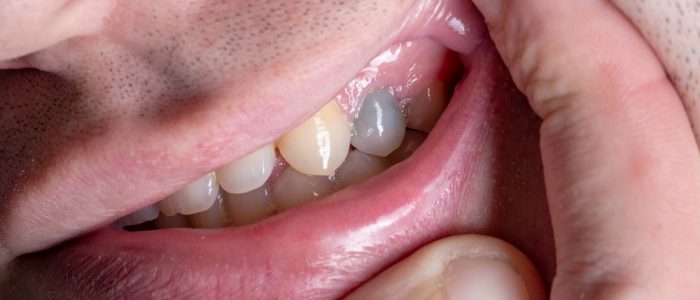How Do Dentists Fix a Dead Tooth?

Your smile is a valuable asset, and keeping your teeth healthy helps your smile look its best. Unfortunately, dental issues, including a dead tooth, are bound to happen at some point.
Northside Dental Clinic in Springfield, MO, explains what to do if you have a dead tooth and how dentists fix it.
What Is a Dead Tooth?
A dead tooth is a tooth that no longer receives blood flow. It lost the ability to feel sensations, such as hot or cold, due to the death of the dental pulp, the soft inner tissue of the tooth.
Related Post: How Do Infectious Diseases Affect My Teeth?
This condition can occur for many reasons, but the most common are dental decay or trauma to the tooth. This condition can affect both adults and children. If you suspect you have a dead tooth, it should be quickly taken care of to prevent further complications.
Signs of a Dead Tooth
Identifying a dead tooth is crucial in getting timely treatment. Here are some common signs to watch for.
Tooth Discoloration
One of the most apparent signs of a dead tooth is a change in color. A dead tooth may appear gray, yellow, or even black compared to the surrounding teeth.
Pain or Discomfort
While a dead tooth might not be as sensitive as a healthy tooth, you may still experience occasional pain or discomfort, especially when you chew or apply pressure.
You might also experience some sensitivity to temperatures, like hot or cold foods and drinks.
Bad Breath
In some cases, a dead tooth can lead to bad breath, as the dead pulp tissue leads to bacteria, causing the release of foul-smelling breath.
Swelling or Bumps
An abscess or a pimple-like bump on the gums near the affected tooth can indicate an infection associated with a dead tooth.
Taste or Smell Sensation
Some individuals may notice a strange taste or smell associated with the dead tooth, which can be a sign of infection or decay.
If you experience any of these symptoms, consult your dentist promptly. Ignoring the issue can lead to more severe problems and complications.
Can a Dead Tooth Be Saved?
Unfortunately, a dead tooth won’t heal itself over time. Scheduling a root canal is the best option for fixing the tooth.
A root canal is the most common and effective method for saving a dead tooth. During the procedure, a dentist removes the dead or infected pulp, thoroughly cleans the inside of the tooth, and seals it to prevent further infection. Afterward, a crown is often placed on the tooth to protect and strengthen it.
Related Post: 4 Awesome Alternatives to a Root Canal
Depending on the cause of the issue, the extent of damage, and how quickly treatment is sought, a root canal isn’t an option in some cases.
In cases where the damage is extensive, extraction may be necessary. After the tooth is removed, options for tooth replacement, such as dental implants or bridges, can be discussed with your dentist.
The success of saving a dead tooth largely depends on early diagnosis and quick treatment. If you suspect you have a dead tooth, visit your dentist as soon as possible to discuss the best course of action.
What to Expect From Your Dentist
If you suspect you might have a dead tooth and have made your dentist appointment, it’s natural to feel nervous about having a procedure.
Related Post: Root Canal FAQs
We’ve shared what you can expect during a root canal:
Diagnostic X-rays
Before beginning the procedure, your dentist will take X-rays to assess the extent of the damage and ensure they have a clear view of the tooth.
Local Anesthetic
To ensure your comfort during the procedure, your dentist will administer a local anesthetic to numb the area around the affected tooth. You should not feel any pain during the root canal.
Isolation
The dentist will place a rubber dam around the tooth to keep it dry and free from saliva during the procedure.
Access Opening
The dentist will create a small access opening in the crown of the tooth to reach the pulp chamber and root canals.
Cleaning and Shaping
Using specialized instruments, the dentist will remove the dead or infected pulp tissue and clean the inside of the tooth thoroughly. They’ll also shape the root canals to ensure they are free of debris.
Filling and Sealing
Once the tooth is cleaned and shaped, it will be filled with a biocompatible material, typically a rubber-like material called gutta-percha. The access opening will be sealed to prevent further infection.
Restoration
The tooth will often need a crown to protect it and restore its strength. Your dentist will take impressions for a custom crown.
With the right techniques and a local anesthetic, a root canal is a relatively painless procedure, and patients often report feeling significant relief from any previous discomfort they experienced due to the dead tooth.
Root canals have a high success rate, and many patients can retain their natural tooth for the long term following this treatment. Regular dental check-ups and good oral hygiene practices are crucial to maintaining the health of the treated tooth and preventing future issues.
Get Professional Dental Care in Springfield, Missouri
A dead tooth is a serious dental condition, and seeking treatment from your dentist is essential in preventing further complications.
Our dentists and hygienists work to make your visit as comfortable as possible. Take a look at our dental extraction services. Schedule an appointment or call (417) 862-2468 to discuss your options for a healthier, more confident smile.

